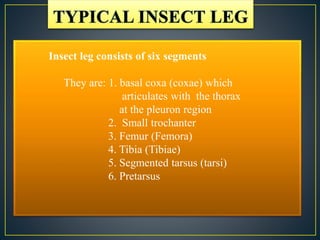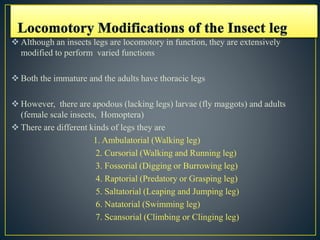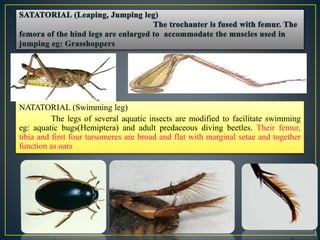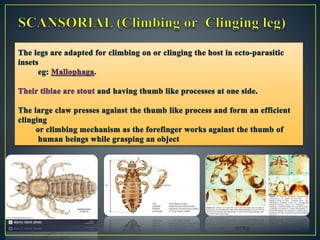The document describes the structure and segmentation of insect legs. It notes that insect legs typically consist of 6 segments - the coxa, trochanter, femur, tibia, tarsus, and pretarsus. The coxa attaches to the thorax and can allow either rotary or back-and-forth movement. The femur and tibia are usually the longest segments. The tarsus is often divided into tarsomeres. The pretarsus includes claws and adhesive pads or structures. Insect legs show many adaptations for different functions like walking, running, digging, grasping prey, leaping, swimming, and climbing. Examples are given of modifications in different groups of insects.



















